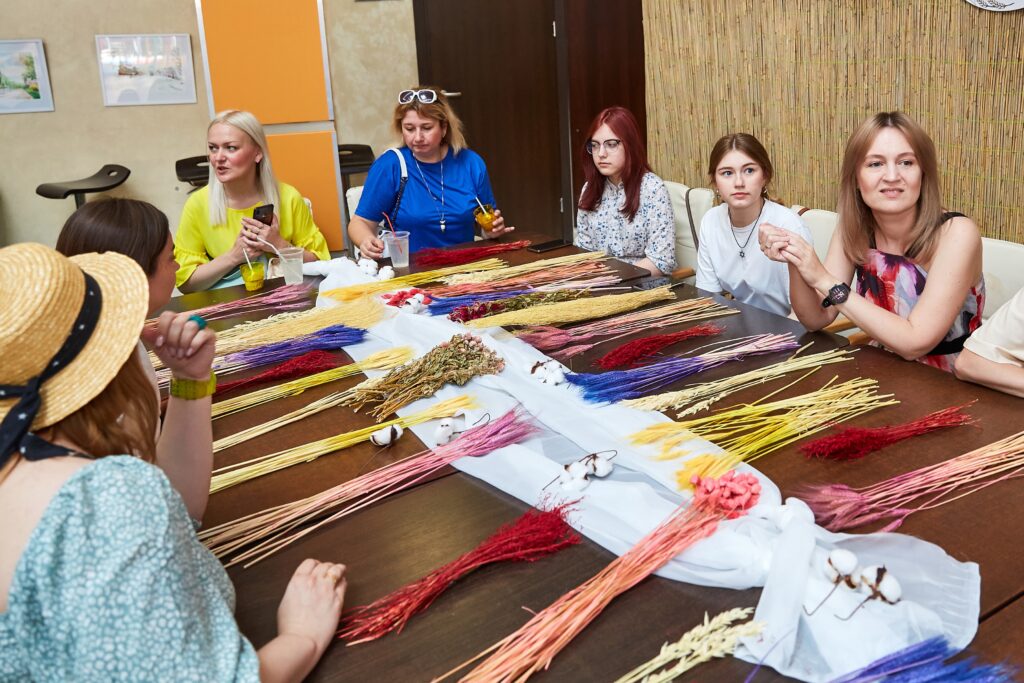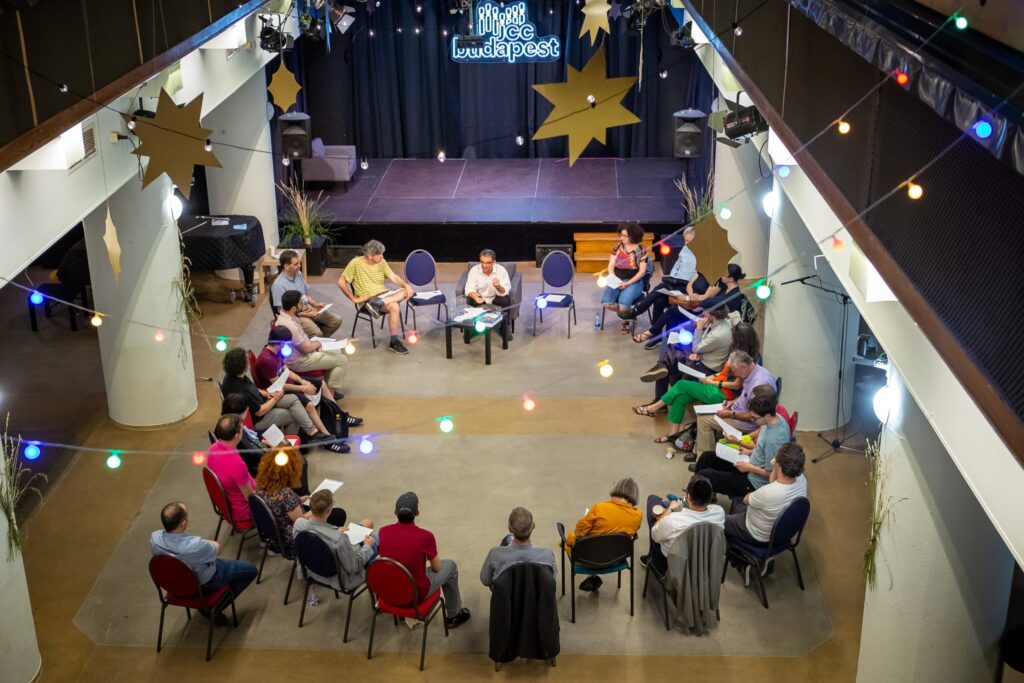On Shavuot, we celebrate both our physical and spiritual sustenance as Jews: the giving of the Torah at Mount Sinai and the annual harvest. At JDC, Shavuot reflects the values that are core to our vital mission — ensuring that vulnerable Jews not only have the material support they need to survive today’s challenges, but the spiritual strength to build a brighter Jewish future.
Observed seven weeks after Passover, Shavuot marks a time when communities come together to study sacred texts and reflect on their faith. With rich traditions and customs, Shavuot serves as a reminder of the deep connection between Jewish identity and agricultural practices. As you read, join us in understanding this important holiday and its relevance in contemporary Jewish life.
Understanding Shavuot
What is Shavuot? Primarily, it commemorates the momentous occasion of receiving the Torah, which is considered the foundation of Jewish law and ethics. Observed seven weeks after Passover, this festival marks the culmination of the counting of the Omer, a period of spiritual preparation leading up to the holiday.
The historical context of Shavuot dates back to ancient agrarian times when it was primarily an agricultural festival, commemorating the end of the grain harvest. Over time, it evolved to encapsulate the profound religious significance of receiving the Torah. This duality of Shavuot as both an agricultural and spiritual celebration reflects the intertwined nature of Jewish life, where physical nourishment and spiritual growth go hand in hand.
When is Shavuot?
When is Shavuot? It is celebrated on the 6th of Sivan in the Hebrew calendar, typically falling in late May or early June in the Gregorian calendar. This timing not only aligns with the agricultural cycle but also serves as a reminder of the covenant between God and the Jewish people. As part of the celebration, many communities engage in all-night study sessions known as Tikkun Leil Shavuot, focusing on Torah study and Jewish teachings. The holiday also features the custom of eating dairy foods, symbolizing the sweetness of the Torah and the nurturing qualities it embodies.
The Significance of Shavuot
What does Shavuot celebrate in Jewish tradition? This holiday marks the culmination of the seven-week counting period known as the Omer, leading to a celebration of spiritual renewal and the acceptance of divine wisdom. It is a time for reflection and gratitude, acknowledging the bounty of the harvest and the blessings bestowed upon the Jewish people.
The importance of Shavuot extends beyond its agricultural roots. It commemorates the giving of the Torah at Mount Sinai, a pivotal moment that shaped Jewish identity and collective memory. This event not only established the foundational laws and teachings of Judaism but also signified a covenant between God and the Jewish people, underscoring the themes of commitment, responsibility, and community.
Shavuot’s connection to the Torah is integral to understanding Jewish identity. It is a time when communities gather to study and engage with sacred texts, reinforcing the values and principles that guide Jewish life. Through reading the Book of Ruth, sharing dairy meals, and participating in Tikkun Leil Shavuot, Jews reaffirm their dedication to learning and spiritual growth. This holiday serves as a reminder of the enduring relationship between the Jewish people and their sacred heritage, highlighting the importance of the Torah as a living document that continues to inspire and guide generations.
Biblical References to Shavuot
The Torah explicitly commands the observance of Shavuot in Exodus 34:22, where it states, “You shall observe the Feast of Weeks, of the first fruits of the wheat harvest.”
According to Jewish tradition, Moses received the Ten Commandments from God on Shavuot. This transformative experience is recounted in the Book of Exodus, specifically in chapters 19 and 20, where the Israelites, having just been freed from slavery in Egypt, stand at the foot of the mountain and prepare to receive divine law.
Beyond the giving of the Torah, Shavuot is also linked to other biblical themes. For instance, it coincides with the end of the barley harvest and the beginning of the wheat harvest, representing the themes of gratitude and abundance. Additionally, in the Book of Ruth, which is traditionally read during Shavuot, the story highlights the themes of loyalty, further enriching the holiday’s significance. Together, these biblical references underscore Shavuot’s importance as a time for reflection, celebration, and the renewal of faith.
How to Celebrate Shavuot: Traditional Customs
Shavuot is marked by various customs and rituals that reflect its deep-rooted traditions:
Consuming dairy foods: This tradition is believed to stem from the biblical description of the Promised Land as a land flowing with milk and honey. Dairy foods, such as cheesecake and blintzes, have become staples during Shavuot meals, symbolizing abundance and the nurturing qualities of the Torah. This culinary practice also aligns with the idea of spiritual nourishment, as the Torah is often referred to as the “bread of life.”
Reading the Book of Ruth: This biblical story, set during the harvest season, highlights themes of loyalty, devotion, and the acceptance of the Jewish faith. The narrative of Ruth, a Moabite woman who embraced Judaism and became the great-grandmother of King David, serves as a powerful reminder of the values of inclusion and love that are central to the Jewish tradition.
Tikkun Leil Shavuot: As noted above, the entire community comes together for these all-night study sessions, where they delve into Jewish texts, engage with their Jewish heritage, and participate in spirited discussion.
Decorations: One of the most well-known practices is the decoration of homes and synagogues with greenery and flowers, symbolizing the lushness of the land of Israel
Modern Celebrations of Shavuot
Modern celebrations of Shavuot have evolved to reflect both traditional practices and contemporary life. In synagogues around the world, Shavuot services are vibrant and engaging. Many congregations also incorporate festive music, prayers, and discussions that deepen the community’s connection to the holiday’s significance as the giving of the Torah.
Community events and festivities play a crucial role in Shavuot observance. Many Jewish communities organize dairy-themed potlucks, where participants bring a variety of cheesecakes and blintzes to share. This culinary tradition stems from the belief that the Israelites, upon receiving the Torah, were not yet familiar with the laws of kosher slaughtering and thus consumed only dairy foods.
In adapting traditions for contemporary life, many families are finding creative ways to celebrate Shavuot that resonate with their lifestyles. Some choose to incorporate themes of social justice and community service into their observance, reflecting the values of compassion and responsibility inherent in the holiday. Others may engage in online study groups or virtual gatherings, making the holiday accessible to those who may not be able to attend in-person events. These adaptations ensure that Shavuot remains a meaningful and relevant celebration for all generations.
Understanding how to celebrate Shavuot in modern times involves blending traditional customs with contemporary practices, ensuring the holiday’s enduring significance in today’s world.











